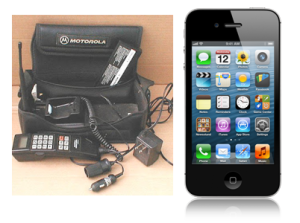My #1 piece of advice to all trainers for the next five years: create a digital version of your content. Do it now. Create it in little packets so you can deliver them in an agile way across a variety of formats, and swap them out as your expertise evolves. Do it for no other reason than it will guarantee your job security, because you’ll have created something hugely valuable for whatever organization you work for.
This article is from HeatSpring’s Online Education Playbook. We’re expert at both clean energy AND how to utilize online tools to enhance training. If you’re business depends on training, click here to read HeatSpring’s online education playbook.
In five years we’ll talk about renewable energy training in a completely different way. Words like ‘online’, ‘webinar’, and ‘hands-on’ will sound quaint – think ‘world wide web’ – and will recede in favor of words that more accurately describe what we’re trying to accomplish. I want to describe where we’ll be in five years to give the amazing teachers and trainers in our industry a chance to prepare. I don’t have the technical knowledge to be a great trainer in this industry, but I rely on great trainers and want you all to have jobs in five years!
We’ve created a series of courses for trainers interested in doing more teaching online, and started writing some straightforward articles like how to convert webinars into courses that might be useful for the trainers out there. Specifics are better than generalities, so we’ll try to give some tangible suggestions you can actually act on.
Keep Your Eye on the Ball
OK…let’s start by establishing the goal of training: to transfer skills and knowledge. There’s tremendous value to be gained by companies, customers, and the industry if we can transfer skills and knowledge to more people. Companies can grow, industries can thrive, and customers can be better served. That’s why manufacturers and distributors and trade schools invest in training. Everyone agrees it’s critical. So we start with a list of skills and knowledge we hope to transfer. You can call this a Job Task Analysis (NABCEP), Learning Objectives (AIA), or whatever. [here’s an example]
As any trainer knows, for true skill transfer to occur you need to do more than tell someone once. There are really five things that need to happen before they actually get it:
- Tell them [lecture]
- Show them [pictures or site-visit]
- Have them read it
- Have them experience it [hands-om]
- Have them teach it to someone else
As trainers we live in an imperfect world and never have enough time to do our jobs. It’s expensive to train somebody, and a huge pain to manage because work schedules change, there’s always turnover, plus new products and new learning is happening all the time. The training department is rarely funded or staffed appropriately to do the job as well as it could be.
Why is creating digital content such a valuable step?
Creating digital copies of your lessons is a pressure release valve for your training program. Now you have the flexibility to deliver learning before, during, and after the time you have to physically spend with people. You can build this set of assets in a way that helps the student experience all five methods of knowledge transfer by making it all available digitally, all the time, and layering field exercises, conferences, meet-ups, and seminars over the top of that foundation. Training begins to melt into the routine of everything we do, rather than being held up as a special thing that we need to set aside time away from the job for.
Education is going digital – this is not a fad.
I feel fortunate to have recently joined the IREC Standards Committee and look forward to learning from my peers through that work. IREC provides a tremendous service to the renewable energy industry and I’m humbled by the great work of my fellow committee members. The small contribution I hope to make on this committee is to update the way we think about delivery methods. My audacious goal for the next five years is to eliminate the words ‘online’, ‘webinar’, and ‘hands-on’ from the training lexicon in this industry and move toward a set of terms that more accurately describe what we’re all trying to accomplish. We all have mental models for ‘face-to-face’ and ‘online’ training that I think will melt away over the next five years. My goal is to be a small part of helping IREC get ahead of that.
The exciting part? It’s going to make life better! Digital delivery of basic concepts means you’ll be able to spend more time on exciting content and advanced topics. You’ll have better visibility of what people are learning and be able to rely more heavily on metrics that show your boss what a great job you’re doing. We’re entering a golden age of education technology where powerful tools are cheap and easy to use. Get on board now and you’ll be leading the pack in five years.

